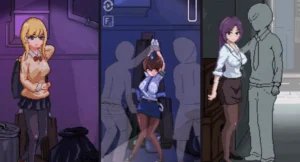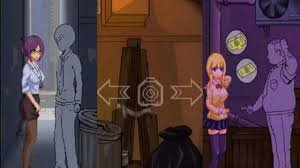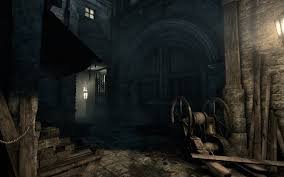Beyond the glittering exteriors of skyscrapers and busy main streets, at the centre of every metropolis is a parallel universe—a maze of back alley tales where light tries to break through the darkness.
These tiny passageways, which are frequently a little bigger than a horse cart, hold histories, secrets, and invisible lives.
A Journey Through Time: The Historical Roots of Alleys
Back alley tales have existed for as long as cities. They appeared as workable answers to urban instability in mediaeval Europe.
The demand for service roads behind residences—routes for deliveries, rubbish collection, and servants—grew as communities expanded.
The Old French allee (“walking passage”) is where the word Back Alley Tales for Android Download originates, yet these hallways were anything but calm. Alleys were crucial but unseen veins that fed the urban body in places like London and Paris.
Alleys in Culture: From Dickens to Dark Knights
Alleys have long been romanticised or vilified in literature and entertainment. Dickens depicted them as places of vice in Oliver Back Alley Tales and Twist, where Fagin’s gang planned under gaslights that flickered.
Alleyway crimes were further sensationalised by Victorian penny dreadfuls, which ingrained them as dangerous areas in the public’s mind.
Allais was renowned throughout the 1940s and 1950s film noir era. Through these chiaroscuro mazes, trench-coated detectives hunted down culprits, rain-slicked sidewalks reflected neon signs, and shadows grew longer.
While Blade Runner (1982) recreated Vienna’s lanes as cyberpunk battlegrounds, films such as The Third Man (1949) utilised them as symbols for moral uncertainty.
Voices from the Shadows: Personal Stories
Real lives throb in alleyways beyond myth. Consider Miguel, a dishwasher in Mexico City, who finds comfort in the silence of the alley behind the restaurant where he smokes his cigarette every night.
For example, Mrs. Chen, a septuagenarian in Hong Kong, has been selling herbs to devoted clients in the same alley market for fifty years.
Alleys are also claimed by artists. Once abandoned, Melbourne’s alleyways now attract tourists because of their paintings.
Tali, a street artist whose work in Berlin’s Hackesche Höfe combines protest and beauty, claims that alleys are canvases.
Alleys are given a human face by these tales, which show them to be spaces for community, creativity, and resiliency.
The Modern Alley: Reinvention and Erasure
Alleys now confront existential dangers. Cities are undergoing gentrification, which transforms “blight” into upscale areas.
The history of Seoul’s Ikseon-dong, a tangle of alleyways from the 1920s, has been commercialised and is now home to galleries and cafés.
The “Green Alley” project in Chicago uses permeable pavement in place of asphalt to prevent flooding while also changing the alley’s rough character.
Should alleyways continue to be authentically raw or develop into sanitised urban features? The solution is to maintain them as living areas rather than museum exhibitions by striking a balance between preservation and advancement.
The Dichotomy of Danger and Sanctuary
Alleys are paradoxical. They serve as both havens and places of crime, including drug sales and muggings.
While Resistance soldiers were concealed in Parisian alleys during World War II, LGBTQ+ youngsters now find welcome in alleyway clubs.
Alleys in Beirut turn into makeshift playgrounds for kids fleeing the dangers of war.
This dichotomy is highlighted by the homeless population. Alleys might represent carelessness to some or temporary safety to others.
Conclusion The Enduring Soul of the City
Back alleyways are lasting, intricate, and unadorned microcosms of urban life.
They serve as a reminder that cities are collections of human tales preserved in brick and shadow, not merely monuments and marketplaces.
The tenacity of those who endure, create, and connect in places the world forgets is what gives us light even in their darkness.
The alley’s constant change is a tribute to the city’s unbreakable spirit and the people that traverse its undiscovered passageways.






